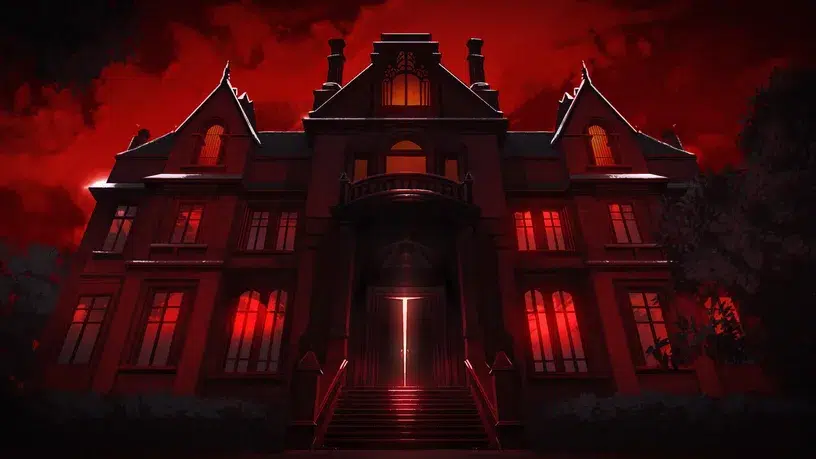
A Market Scaling New Heights… But at What Cost?
The video game industry continues to be a juggernaut. With the rise of mobile, live services, and blockbuster franchises, global revenues are projected in the hundreds of billions and still climbing. Yet beneath these staggering figures lies a complex narrative: development costs soaring, consumer pushback on pricing, hardware expectations strained, and even AI and layoffs reshaping the future of creativity.
The $80 Experiment: A Pressure Cooker Moment
In 2023, whispers of a new industry standard of $80 for AAA titles first circulated. But according to Bloomberg and other analysts, the push quickly stalled. Big publishers—including Nintendo, Microsoft, and EA—have since moved forward with widespread $80 pricing. They were swiftly met with backlash and disdain from gamers who feel like a wallet, versus a voice. There have been numerous outspoken advocates, including content creators, calling out mega corporations. Their complaints are often centralized around unnecessary price increases, less value for more money, and claims of “market condition changes” without ever having to justify what those changes truly are. We’ve seen such behavior recently with games like Mario Kart Worlds. What was 13 years in the making came with a price tag that left most consumers believing it would be the best game of the series. Instead, it left gamers frustrated with new gameplaystyles, buying the game only as part of the initial bundle, or disregarding the game altogether. What Nintendo started with the introduction of Mario Kart for $80 lasted less than 2 weeks before other major developers increased their prices to $80 as well.
While we have seen some game developers retreat back to the publicly “accepted” $70 price point, the issue is a bigger one that leaves consumers feeling like their voices are not being heard. The quality of the games has gone down. The modern storylines are weak. The need for internet connectivity is an issue. What can be done to save the gaming industry? That is the multi-billion dollar question—one that we are working hard to answer. Stick with us.
Microsoft’s Layoff Shockwave—A Tale of Profit and Pain
In early 2025, Microsoft announced a surprising and sweeping round of layoffs—cutting roughly 9,000 positions across its divisions, adding to earlier reductions, and bringing the year’s total to over 15,000 jobs.
Yet this came against the backdrop of record profits:
- Net income hit $27.2 billion in a single quarter, while Azure and AI investments soared.
- CEO Satya Nadella framed the layoffs as part of a necessary “enigma of success,” enabling reinvestment into AI and innovation—even envisioning a future where AI serves as a digital agent for everyone.
But the human cost is real:
- Many beloved game projects—including Everwild, Perfect Dark, and Contraband—were canceled outright, while several studios were shuttered.
- Xbox Game Studios saw dramatic workforce reductions—Turn 10 lost nearly half its staff, and multiple Activision/Blizzard and King teams were affected.
This duality—record profits and mass layoffs—is searing. It reveals the tension between shareholder expectations, AI ambitions, and creator welfare. This begs the question, “Are mega corporations buying up small studios a net positive for the game industry? At a quick glance, the answer seems to be no. While the individual studio “makes their money,” they sell all of their rights that made them into the studio that fans came to know and love. The very heart and soul of the company is erased within days, and corporate policy is the new master. A scary thought.
Creative Resistance: Studio Response, Labor, and Innovation
Even as large-scale cuts dominate headlines, there’s a deeply personal wave of resistance and hope rising within the industry.
- Raven Software QA testers achieved a landmark union contract—winning a *10% wage raise, protections against crunch, and improved benefits—a sign of labor power amid turbulence.
- Meanwhile, many developers, former employees, and voices across Reddit and social media are calling out disillusionment, betrayal, and creative exhaustion in the face of mass layoffs.
In summary, game studios are demanding more and more from their devs, while the fear of layoffs looms daily. The creative and innovative process that made developers fall in love with the industry has all but been erased. The smaller studios have surrendered to the corporate controlling overlords, and the idea of a game being good on its own merits seems far-fetched now. The culture of game studios has recently become very … toxic… Blizzard. Ahem. It’s no wonder the game industry is hurting. While this industry still has potential, it’s going to be a hard fought war that was never needed.
This issue is only in its infant stages, but the damage to the video game industry is hitting from every angle. The fight ahead is going to be gruesome. While we can’t predict everything that will happen, we can say that giving up is not something we are willing to do. In fact, these issues are the very reason Fake Portal exists at all. We continue our fight every day.
Press Reset: Rising Development Costs and Industry Cleanup
Beyond the corporate headlines, early-stage creators and indies face structural barriers.
- AAA budgets have ballooned: where $50–150 million was once industry standard, new projects routinely exceed $200 million.
- Combined with inflation, economic slowdown, and elevated expectations, this has forced major publishers (Sony, Warner Bros., and Microsoft) to pivot toward mobile and live service models, leading to layoffs, project cancellations, studio closures and more microtransactions.
In fact, layoffs across major studios like Embracer Group, Epic Games, Take-Two, Riot, Unity, and Microsoft Gaming have reshaped development pipelines and talent movement. Yet despite these shocks, the long-term outlook leans in both directions.
Analysts expected investor confidence to return in 2025–2026 with major upcoming releases—GTA VI (maybe*), MN: Wilds, Pokemon Legends Z-A, Doom: The Dark Ages—and new Nintendo hardware.
While the Nintendo Switch 2 launch had a lot of success*, the likelihood of continued dominance looks bleak. Two months after release, and we already see shelves full of the systems available in numerous retail locations. After interviews conducted with tens of thousands of gamers, we can safely say that 92% of gamers have said they have not and will not be buying a Switch 2. That stat is concerning no matter how you look at it.
The industry continues its incredible dominance on paper. The unseen issues come from a 58% income generation through microtransactions—a method of buying in-game add-ons that most consumers hate. It seems that the amount of money die-hard fans are willing to spend is increasing, but the number of fans willing to spend money at all is decreasing. This approach can’t go on forever. Buckle up, because the next 5 years of gaming are going to be very telling on consumer expectations and the relationship between customers and studios.
Video Game Market Outlook
According to PwC, the video game industry could reach $321 billion by 2026—nearly a $60–$70B increase from 2023.
Trends to watch:
- Mobile gaming continues to dominate in revenue and broad user base.
- Advertisements, cloud gaming, in-game monetization, and cross-platform development are emerging as keys to future growth.
Innovation hubs like indie games, AR/XR, and AI-driven gameplay keep hope alive for creative renewal—even during consolidation. Let’s face it—it’s a scary time to be a game. If not scary, exhausting. The fight never ends, but we hope that we can find a happy medium that allows us to love the industry like we used to, just one decade ago.
Summary Table: Industry Snapshot
| Factor | Key Highlights |
| Game Pricing | $80 price point attempted but largely retracted; hardware costs rising |
| Corporate Cuts | Microsoft: 9,000 layoffs amid record profits; game divisions heavily impacted |
| Creative Fallout | Major project cancellations; indie/QA pushback with unionization gaining ground |
| Cost Pressures | AAA budgets exceed $200M; layoffs across major studios; mobile pivot underway |
| Growth Horizon | Gaming industry still projected to nearly double by 2026; mobile + ads + AI trends |
| Innovation Compass | AR/XR, indie creativity, cloud gaming fueling optimism for next era |
Final Thoughts
The video game industry in 2025 stands at a crossroads—a powerful blend of technological promise, economic turbulence, and creative crossroads. As pioneering studios wrestle with AI-driven strategies, layoffs, and budget pressures, indie creators, labor advocates, and core fans remind us that gaming’s soul lies in innovation, inclusivity, and passion.

